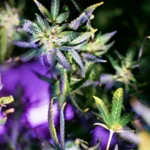Introduction
It is always interesting to learn about the growth of indoor plants and one of the most frequently asked questions is whether it is beneficial to leave the best led grow lights on during the night. A question that many commercial growers, horticulture enthusiasts, and indoor gardeners may all come to ask, at one point, is – Would it be more advantageous to let light be constant to the plants so that it can increase its yield, its growth or other aspects of production? But this is not something as simple as it looks like.
Plants originated with the natural day-night cycle as the only source of light and therefore light needs to be well understood, especially more so in controlled growing conditions where light is often purchased for the purpose and energy used is more directed towards this specific requirement. This article will also give a look on the cycles of light in plants, daylight vs LED grow light, and if continuous lighting may be beneficial or detrimental to the plants.
Understanding Plant Photoperiodism
What Is Photoperiodism?
Photoperiodism means how plants behave depending on the duration of the light and dark phase in their ecosystem. Different plant species have varying needs when it comes to light exposure, and these needs are generally categorized into three main types:
- Short-day plants: These plants need more time than others to let the darkness strike them to bring out the flowers. They often grow during those seasons when days are shorter either in the autumn or during the winter. Examples are chrysanthemums and Poinsettias.
- Long-day plants: This indicates that longer daylight periods are necessary in order to really bring these plants into flower and form. Examples ofvariably bearing crops include most summer crops like spinach and lettuce crops.
- Day-neutral plants: Many of these plants are not photoperiod and can be induced to flower or begin other growth processes regardless of the length of light exposure. It must be noted that this type of plant can grow well in different types of light and thus ideal for placing indoors.
Why the Dark Period Matters?
The dark phase in the life cycle of a plant is just as important as the light phase because it allows the plant to undergo several crucial physiological processes that contribute toward total health. Here’s a breakdown of why darkness is needed:
1. Respiration:
- Plants absorb sunlight and convert it to energy; they store it in sugar.
- A t night, the stored energy in sugar is consumed by plants for respiration. . The process then drives basic growth activities-like cell division, as well as nutrient transport.
- If darkness is not enough, then respiration may become inefficient too and, thus, growth is limited.
2. Flowering:
Short-day and long-day plants rely on darkness to trigger hormonal shifts that promote flowering.
The duration of darkness signals plants when to start producing flowers, especially in crops like chrysanthemums or poinsettias (short-day) and spinach or lettuce (long-day).
Flowers may also result from an interruption in this dark period.
3. Growth and Recovery:
• Just like humans, plants need rest to repair and recover.
• Extended light exposure starves plants by messing with circadian rhythms: metabolism slows down.
• Master thesis writing Continuous light may thwart sturdy growth, vim, and vigor as well as yield capacity.
For professional growers, knowing and managing these light-dark cycles means getting the best growth as well as productivity. Darkness is vital for plant development, flowering, and overall vigor.
LED Grow Lights vs. Natural Daylight
Natural light versus artificial LED light
While LED grow light systems are designed to provide a spectrum close to natural sunlight, there is a contrast between natural light and led full spectrum grow light. Natural light bends at all the light intensities; during the day, artificial light like LEDs can offer steady light resultants and required spectrums.
As much as they can mimic the sun, plants require sometime of darkness in order to perform the various activities. OTC variation is also dependent on time and can serve as a signal for plants concerning the time for photosynthesis and the time to stop. As a result in artificial lighting condition this physiological rhythm is often disrupted unless the periods of light are appropriately regulated by the growers.
Nanolux’s LED Grow Lights: Tailored for Precision
Thus, NanoLux’s third generation top rated led grow lights are advantageous for both, home-growers and professional businessmen and women. The above lights can be regulated to fit different photoperiods so that the plants can have the right density of light at any given time. For example, Nanolux has developed its full-spectrum LED lights with maximum accuracy to let the growers adjust the light spectrum and the intensity in accordance with every type of plants.
They do not allow unhealthy growth and, especially in the case of light, it can be turned on for a limited amount of time to use more energy-efficiently than other elements.
Risks of Leaving LED Grow Lights On All Night
Stunted Growth and Improper Flowering
While using the hid grow lights some individuals place these products into operation during the night hoping that this measure will contribute to the acceleration of plant growth, in fact, such action is far from being useful, as it causes numerous negative impacts on plant development.o Plants have sleep at night, unlike animals, in order to respiration to supply the energy stored in photosynthesis to the growth of the plant can actually lead to a number of adverse effects that hinder healthy development. While plants do rely on light for photosynthesis, continuous exposure without a dark period disrupts their natural biological processes, leading to several negative outcomes:
Stunted Growth:
- Plants need to respire in the dark to produce useable energy from stored photosynthesis products for growth. Without a proper dark period, respiration is sluggish, resulting in stunted or abnormal growth patterns.
- The metabolism of the plant is thrown out of gear; it becomes inefficient in assimilating nutrients, resulting in weaker stems and smaller leaves.
Incorrect Flowering:
- Other plants, for instance, the short-day chrysanthemums or long-day lettuce, require the specific light and dark cycles to trigger hormonal changes for flowering.
- When plants are kept under constant light, these cycles get disrupted; thus, the formation of flowers is either delayed or completely inhibited, which precedes crop yield as well.
Increased Plant Stress:
- Plants can become stressed just like an animal can if it does not sleep and they can be stressed by too much light, in the same way, they get light 24/7.
- This stress reduces the ability of a plant to withstand pest and diseases attack, climatic shocks, and in general, makes the plant to be less productive.
Therefore, it would be wise to learn about the need for the break in order to be able to grow the plants properly.
Energy Inefficiency
Recommended Light Schedules
Continual running of 1000w led grow light also affects energy consumption Efficient. This can significantly raise their electrical demands in large commercial growing environments without a comparable proportional return in yield in plants. Though, commercial led grow lights are brighter and more energy-efficient than the traditional grow lights, they do consume power and long working hours leads to wastage of money.
In large operations, managing light with production performance is critical during plant management. Leaving the lights on at night, for example, not only wastes energy but raises the climatic impact of the process too.
Best Practices for Commercial Growing
To maximize healthy plant growth and outcomes, the light schedule needs to be in a dependency on the life cycle/stage and type of plants. When the B2B growing operations need to be consistent as well as efficient, strict adherence to the light exposure recommendations will definitely enhance the growth. Here’s a closer look at how different light schedules affect plants at various growth stages:
Vegetative Growth:
- During the vegetative stage, plants focus on producing leaves, stems, and roots. Most plants thrive with 16-18 hours of light during this stage, followed by 6-8 hours of darkness. This extended light period promotes vigorous growth, allowing plants to efficiently photosynthesize and accumulate energy.
- A balanced dark period is essential during this stage as it allows plants to respire and process nutrients accumulated during the light period. Without sufficient darkness, the plants may experience stress or imbalanced growth.
- This light schedule is ideal for crops like leafy greens, herbs, and other fast-growing plants.
Flowering Stage:
- Once plants transition to the flowering stage, light requirements change significantly. Many species, especially those that are sensitive to photoperiods, require a 12-hour light, 12-hour dark cycle to trigger flowering.
- During this stage, the dark period becomes critical, as it activates hormonal changes necessary for flower production. Plants like cannabis, tomatoes, and strawberries often depend on this balanced light-dark cycle to achieve full bloom.
- Maintaining a consistent light schedule during this phase ensures that plants produce healthy, abundant flowers, maximizing both quality and yield.
Using these schedules, along with Nanolux’s programmable 600 watt led grow light, allows commercial growers to fine-tune lighting according to each plant’s specific needs, ensuring optimal growth while improving energy efficiency.
How Nanolux’s LED Grow Lights Help?
Nanolux LED grow lights have 2-people options that crop growers can program depending on growth stage of the plants. The reported adaptability is highly important for business processes associated with the commercial production of plant material as well as the efficient use of energy within this context. Due to the above, Nanolux lights control the intensity, full spectrum led grow lights and timing to provide right conditions for growth phase to the plants yielding high output with low power consumption.
Conclusion
As a device for promoting plant growth indoors, best led grow lights for indoor plants can be very effective when used appropriately, but leaving them on at night is going to be actually counterproductive. Fruits and vegetables need light to grow and develop but need Darkness to carry out other fundamental functions such as respiration, flowering, and shoot development.
The ideal way to manage this challenge is by programming LED grow lights, like those provided by Nanolux, to mimic an ideal light regimen for the plant’s growth. Getting specific lighting programs, the growers can increase productivity, regulate plants’ health, and decrease energy consumption–that is why Nanolux led replacement for hps lamps are perfect for those who have businesses in B2B growing conditions as well as for the hobbyists.



